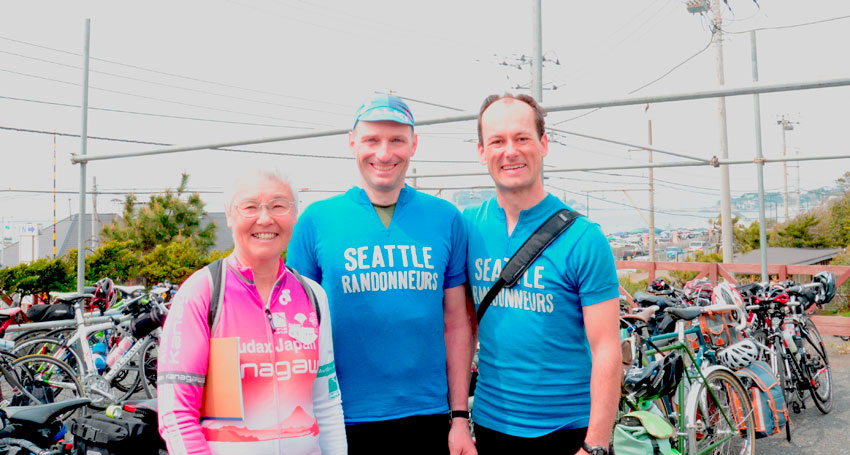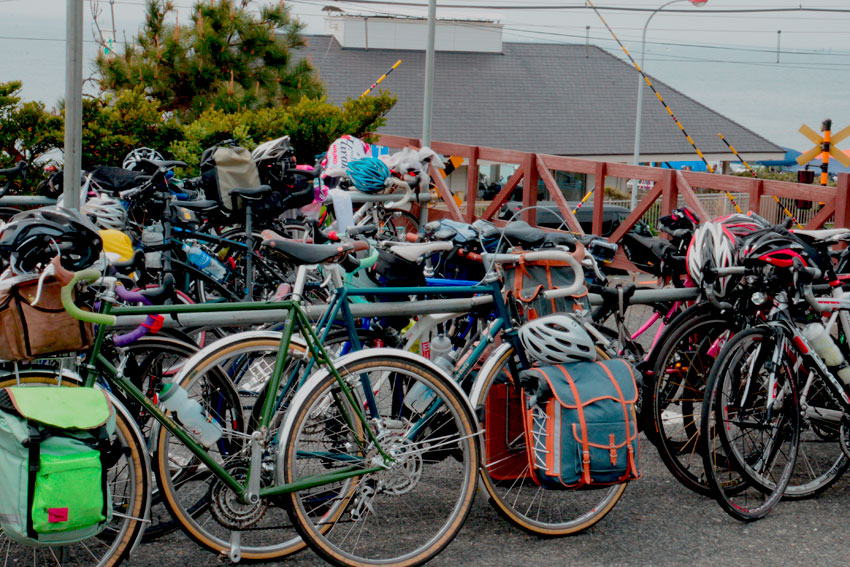Flèche in Japan

Last weekend, the Japanese randonneurs organized their Flèche 24-hour ride. We were honored to be part of the banquet at the finish. (The photo shows us with Maya Ide, the organizer.) Originally, we had been scheduled to ride with a team, but I broke my hand three weeks ago. With my injury, a non-stop 24-hour ride was not a good idea.

Instead, we spent four days of touring in the Shinshu Mountains, and planned the end of our ride to coincide with the end of the Flèche. Above are our loaded bikes among the lightweight machines of the randonneurs.

Seeing the Japanese Flèche was a wonderful experience. More than 50 teams from all over Japan participated this year, and more than 150 riders were present. It was huge – above is the bike parking area…

… and this is a view inside the banquet hall. (Sorry for the crummy cellphone photo.) Everybody was happy, sharing stories and meeting friends. We were warmly welcomed – the Japanese really make you feel special when you visit.
What struck me about the Japanese randonneurs was how vibrant and diverse the sport is here. There were riders of all ages, from the 20s to a 77-year-old, with many riders in their 30s. There were many women, some of whom had ridden on all-women teams, and others who were part of mixed teams. Randonneuring in Japan truly seems to reflect the demographics of cycling…
The awards also emphasized the “big tent” of randonneuring. There were mentions of the oldest team, the team that had traveled the farthest to participate in the Flèche, and also the team that had covered the greatest distance: 536 km. The latter team had arrived at the final meeting point in Kamakura three hours ahead of schedule, so they continued all the way to Tokyo, before returning for the celebration. It was nice to see these riders being true to the spirit of the Flèche – of riding the maximum distance possible – yet there didn’t seem to be anything boastful about their performance.
Riders talked about plans for the season and rides they had done. Mountain passes and beautiful roads figured frequently in these plans. There was talk about the Super Randonnée 600 – Japan has three of these routes with 10,000 m of elevation gain. About 100 randonneurs have completed at least one of them. Having experienced the amazing mountain roads here, I hope to return to ride a Japanese SR 600 some day.
It was wonderful to see such a vibrant organization, so much enthusiasm, and so many young people. The Japanese randonneurs are a wonderful model of what our sport can be like.


